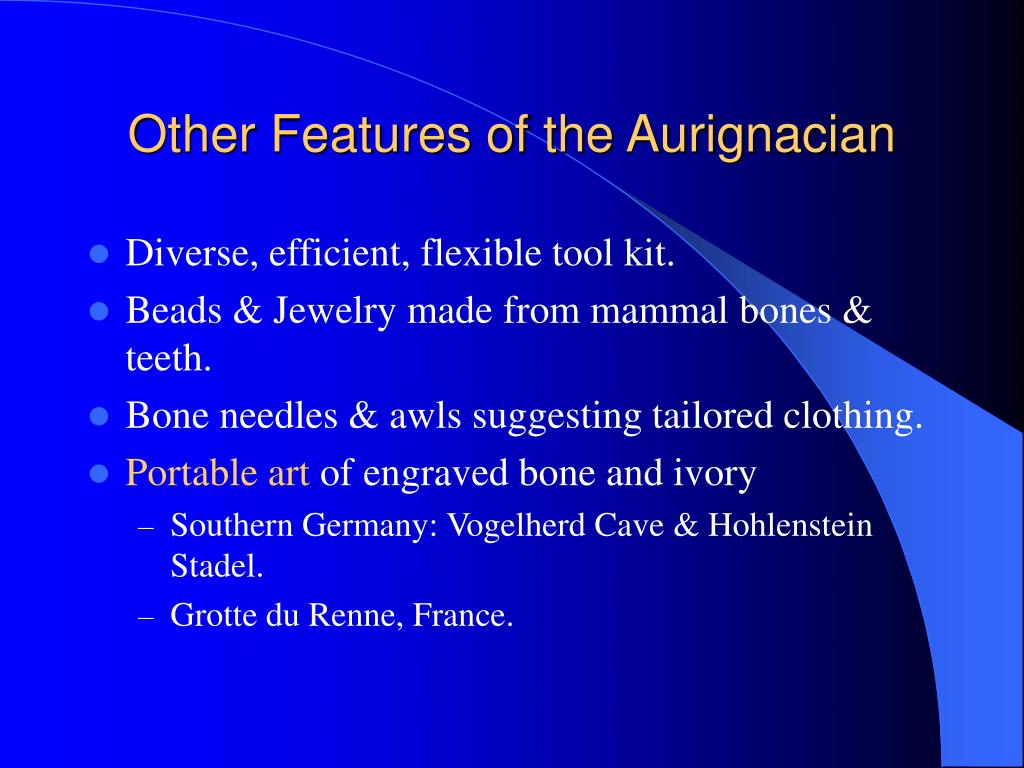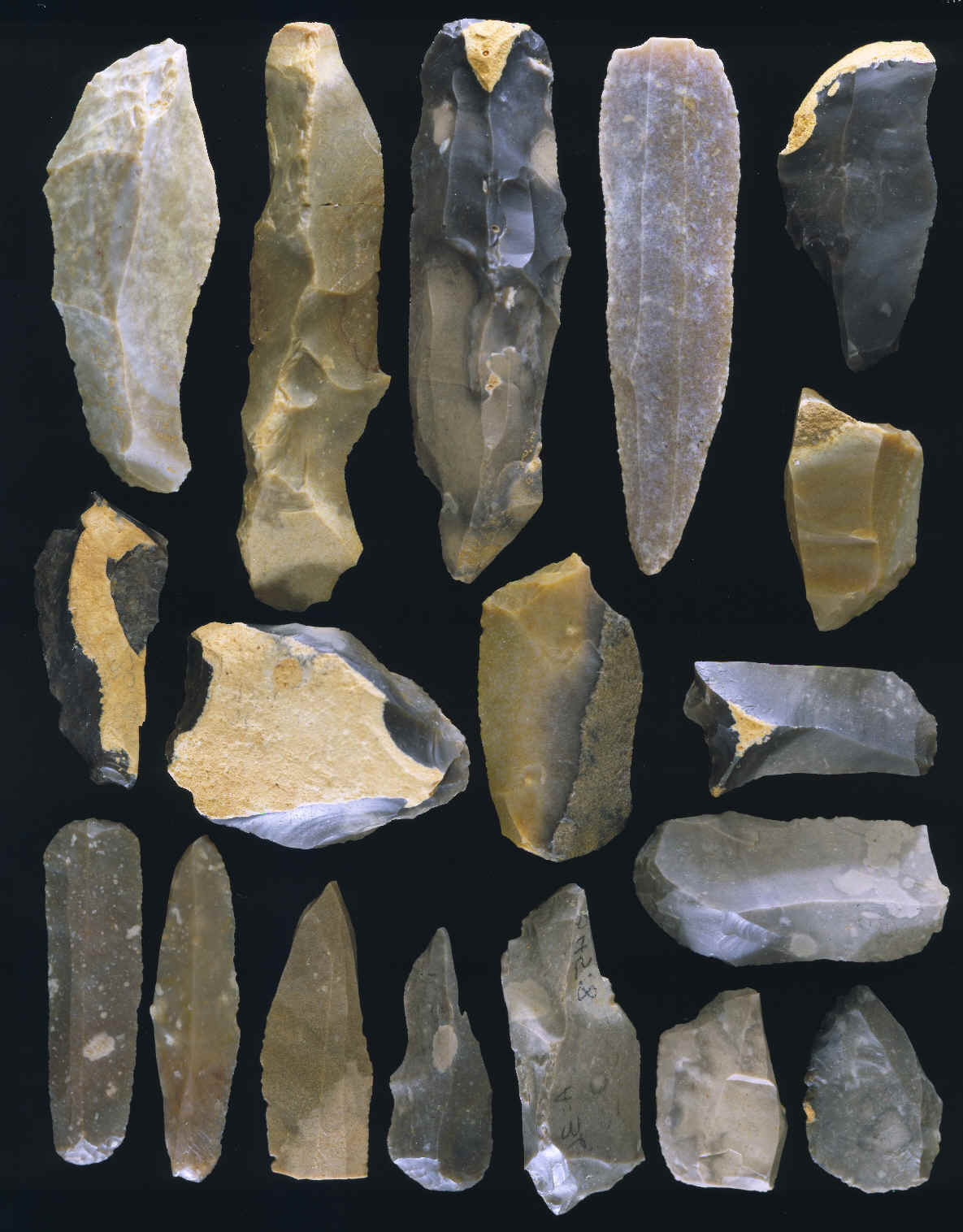
What this suggests is that the Upper Paleolithic was a time of immense cultural output. Along with this diversity of geographic locations came a diversity in art ranging from figurines and paintings to musical instruments and pendants.

Over the course of about 20,000 years, Aurignacian technology and peoples made their way at first into the Balkans and Central Europe, and later into the Levant, North and Western Europe, Southern Europe, Eastern Europe, Central Asia, Mesopotamia, and even Siberia.

One of the most significant pieces of information learned by studying the Aurignacian is the mobile nature of Homo sapiens in the Upper Paleolithic.
Aurignacian tool industry pdf#
Alessandro Baricco Questa Storia Pdf To Jpg there. These peoples were innovators in art and technology, always increasing and elaborating the scale and detail of their toolkit over time. Paleolithic Period, Mesolithic Period, and. The Stone Age, whose origin coincides with the discovery of the oldest known stone tools, which have been dated to some 3. From as far afield as Central Asia and Southwester Siberia to Europe and the Levant, Aurignacian culture dominated.
Aurignacian tool industry download#
Supernatural Terza Stagione Download Itag there. A cultural sequence had been broadly transported, elaborated, and shared throughout many places in the world. Anatomically modern humans appear at least 100,000 years ago. The same stone tool making technology also occurs on sites in countries farther to the east into Siberia. There are utilized blades, 2 crested blades, end scrapers, side scrapers and burins.From the pre-Aurignacian to the end of the various Aurignacian phases, something significant had occurred. The Aurignacian stone tool industry occurs within the Upper Paleolithic Period in Europe from 34,000 to 29,000 years ago. The first discovery of Aurignacian tools in this cave occurred in 1852, when Jean Baptist Bonnemaison, a local. CLICK ON PICTURE FOR VERY LARGE IMAGE MISCELLANEOUS TOOLS UPPER PALEOLITHIC-AURIGNACIAN SOLVIEUX SITE SOUTHERN FRANCE The artifacts in this picture represent several different types of flakes and tools belonging to the Aurignacian stone tool industry. The findings of hundreds of different tools and handmade products suggest an entire tool industry in which Aurignacians would have developed new tools to work and may have even traded or shared tools with one another. Whistles and flutes have been found on Early Upper Paleolithic sites in Europe. These materials were used to make jewelry and other pieces of art.Įven musical instruments are being made during this time. There is also widespread evidence of long distance trade of raw materials such as fossils, shells, ivory and stone. Some of the earliest ivory carvings of animals and human figures begin to appear at this time. Continued from page 1 aurignacian the first modern humans in europe an early upper paleolithic stone tool industry. It is followed by the Aurignacian industry. The industry produced denticulate stone tools and also a distinctive flint knife with a single cutting edge. Aurignacian culture: Aurignacian culture, toolmaking industry and artistic tradition of Upper Paleolithic Europe that followed the Mousterian industry, was.

Perigordian industry: Perigordian industry, tool tradition of prehistoric men in Upper Paleolithic Europe that followed the Mousterian industry, was contemporary in. The Aurignacian is also recognized for its intensive use of worked antler and bone. They refined their core and blade lithic technology to the highest skill level that could be attained. The most durable and physical evidence they left behind are the stone tools. The Aurignacian stone tool industry initiated a more advanced culture than ever before. Archaeologists recognize the Early Upper Paleolithic period as the beginning of the first modern humans in Europe. If you enlarge the picture you will see the ends of the blades more clearly and some of the striking platforms where they were struck off using indirect percussion flaking. CONTINUED FROM AURIGNACIAN THE FIRST MODERN HUMANS IN EUROPE AN EARLY UPPER PALEOLITHIC STONE TOOL INDUSTRY 34,000 TO 23,000 YEARS AGO PAGE 2 OF 3 CLICK ON PICTURE FOR VERY LARGE IMAGE END VIEW OF A REFITTED CORE UPPER PALEOLITHIC-AURIGNACIAN SOLVIEUX SITE SOUTHERN FRANCE This picture shows a larger view of the end of a core that was refitted with several of its original blades.


 0 kommentar(er)
0 kommentar(er)
